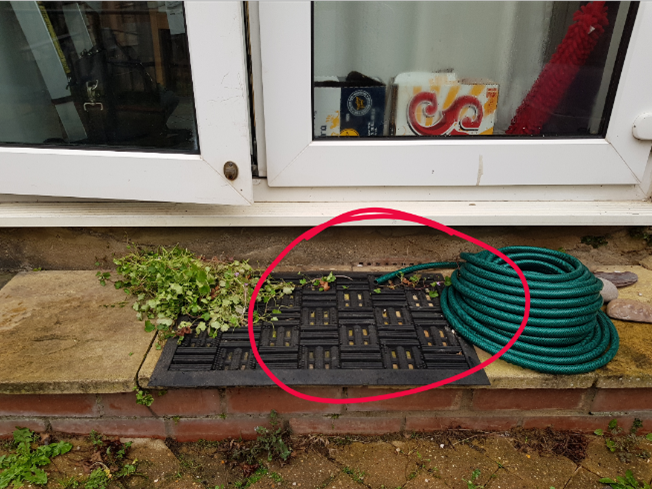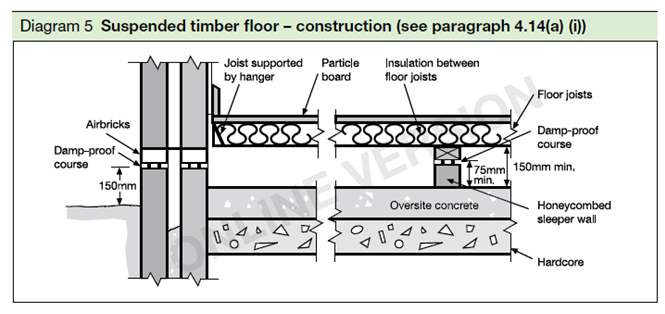As residential surveyor I visit hundreds of properties every year and almost every week I found similar defects. One of these is the lack of adequate subfloor ventilation to suspended timber floor structures to the ground floor rooms, particularly in old properties. Quite frequently occupiers have blocked the existing air bricks/ventilation grilles to prevent the ingress of mice, the openings are partly obstructed with paint or mortar and/or builders have blocked the vents when adding new extensions or have paved the surrounding gardens. In other instances, the ventilation openings are too low that can allow water on the ground to enter the subfloor void.


Why is subfloor ventilation required? The timbers need to be free from excessive moisture and condensation to protect them from rot and woodworm attack. Additionally, in areas of high levels of Radon (a naturally radioactive gas), adequate ventilation is necessary to prevent this gas from seeping into the building.
Current building regulations require that there is a ventilated space between the ground and the timber structure, with at least 150mm between the ground and the underside of the suspended timber floor. There should be ventilation openings to two opposite external walls to allow free flow of air spaced in such a way that all parts of the subfloor void are ventilated to remove moisture. Where it is not possible to install the adequate number of vents to two opposite external walls, cross ventilation can be provided by installing a combination of vents/air bricks and air ducts. The openings should be not less than either 1500square millimeters for every meter run of external wall or 500square millimeters for every square meter of floor area, whichever is greater. The vents should not be spaced more than 2meters apart and to be within 450mm of the end of any external wall. The bottom of the vents/air bricks should also be at least 150mm above the external grounds. If the external grounds need to be less than 150mm below the internal floor level, the ventilation can be provided through periscope/telescopic vents.

Recommended technical solution in approved document C, The building Regulations 2000
What should you do if your property does not meet these requirements? First of all, we strongly recommend carrying out a subfloor inspection. This will require removal of the floor coverings and floorboards to allow a thorough inspection. A less comprehensive option would be an endoscope inspection through the external vents. Any damaged timber by rot or woodworm infestation found will require to be replaced. Secondly, additional vents will need to be installed and/or alteration done to meet the requirements mentioned in the paragraph above. This will prevent further deterioration to the timber floor structure. Where the existing vents are inside an enclosed space (such as a porch, garage, or any other room), these need to ventilate to the outside and not inside an enclosed space to allow free flow of air. The vents should be re-located, or the external walls of the enclosed space provided with permanent air bricks. Finally, any obstructions in front of the vents/air bricks should be removed, including paint/mortar that reduces the size of the openings.


